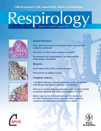Clinical profile of adult cystic fibrosis patients with frequent epidemic clones of Pseudomonas aeruginosa
ABSTRACT
Background and objective: Earlier reports suggested that Pseudomonas aeruginosa frequent epidemic clones circulating in cystic fibrosis (CF) centres had increased virulence. However, recent data show no consistent associations with virulence, and suggest attenuation of virulence in chronic infection. Changes to infection control programmes in relation to frequent epidemic clones should be based on their frequency, virulence across all age groups and mode of acquisition. The Australian epidemic strain-1 (AES-1) (or the Melbourne epidemic strain) and AES-2 are common in CF clinics in mainland eastern Australia, but not in the environment. Both have shown increased virulence, but there are no data specifically in adults. This study examines the frequency and virulence of P. aeruginosa frequent epidemic clones in the adult CF clinic at Royal Prince Alfred Hospital, Sydney, Australia.
Methods: Two hundred and fifty-eight P. aeruginosa isolates from 112 participants were genotyped by pulsed field gel electrophoresis. Ninety-eight patients were followed up for 1 year and associations sought between infection with a frequent epidemic clone, clinical outcome and antibiotic resistance.
Results: Four frequent P. aeruginosa epidemic clones (AES-1, AES-2, S-1, S-2) affected almost 50% of participants. AES-1 predominated (38%). AES-1, AES-2 and S-1 were associated with increased exacerbations and hospital-admission days. AES-1 showed increased resistance to aminoglycosides and ticarcillin-clavulanate.
Conclusions: This study supports the potential threat of frequent P. aeruginosa epidemic clones in adult CF populations.




